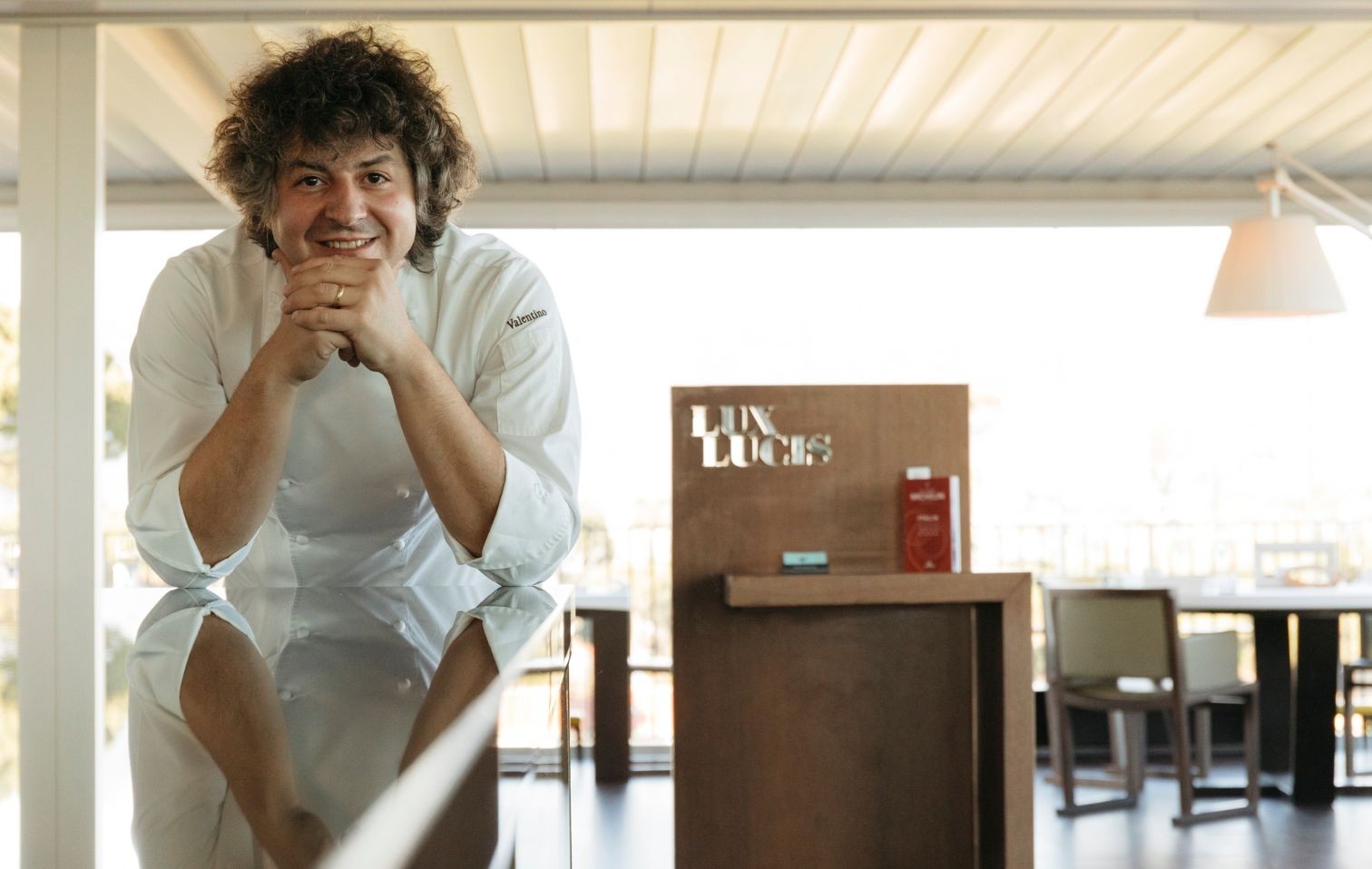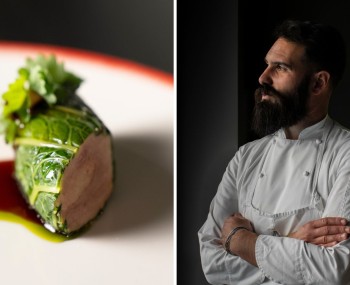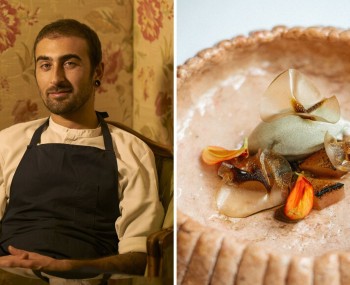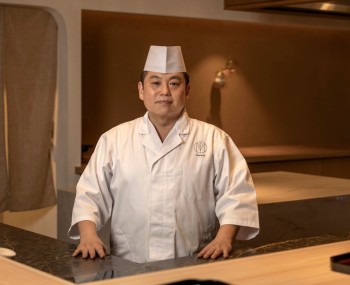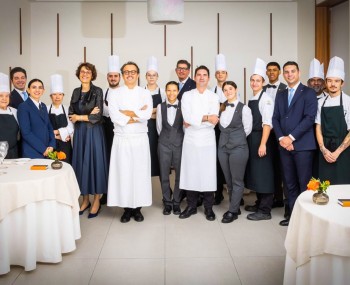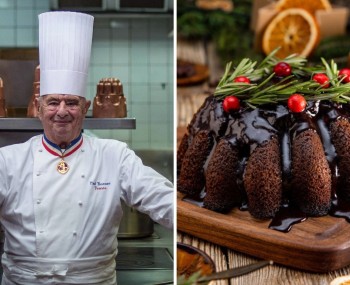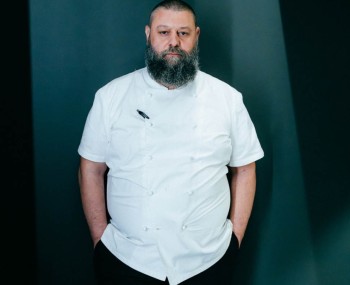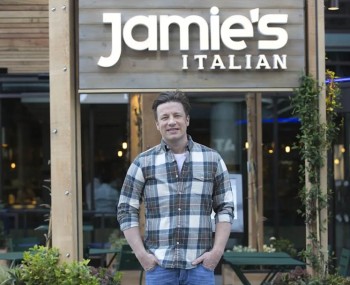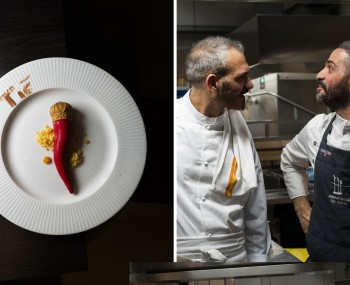It is relentless the growth of Valentino Cassanelli, who at Lux Lucis in Forte dei Marmi offers cuisine from youthfulness inclined to maturity, classic but straight in concept, with the impeccable complicity of another star: Sokol Ndreko.
The restaurant
On one side the sharp white profile of the Apuan Alps, entrenched like a phalanx, in front the calm mirror of the sea and the immaculate cabanas, all around the string of villas among the pines and the countryside fading into the distance. You can even glimpse the silhouette of Elba Island, like an evanescent Morgan le Fay, set against a spur of Liguria from the top floor of the Principe Hotel in Forte dei Marmi, where Lux Lucis is based. An everyday experience that Valentino Cassanelli, among the most convincing talents of the young guard, has elected as the theme of his creativity.
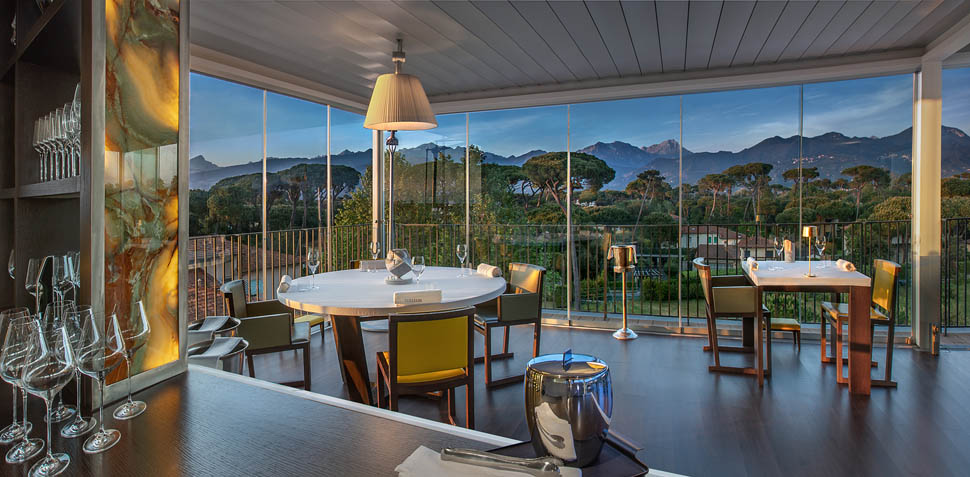
Cassanelli had already gotten us accustomed, over the past 12 years in Versilia, to the rush of contaminations, often fueled by travel. Now, in the “Orizzonti on the Road” menu, he engraves the paradox of being here and elsewhere, on the tightrope of a trajectory that has no boundaries. It is known: language is all the more poetic, the more vague and imprecise it is. But the horizon is by definition how much it blurs: that vagueness that in Italian (and only in Italian) stands for grace, desire, beauty. Just as indefinite, recite Leopardi and Calvino, is the reflection of light, with the material effects that come with it: Lux Lucis, precisely. The light of light and its fickle games.
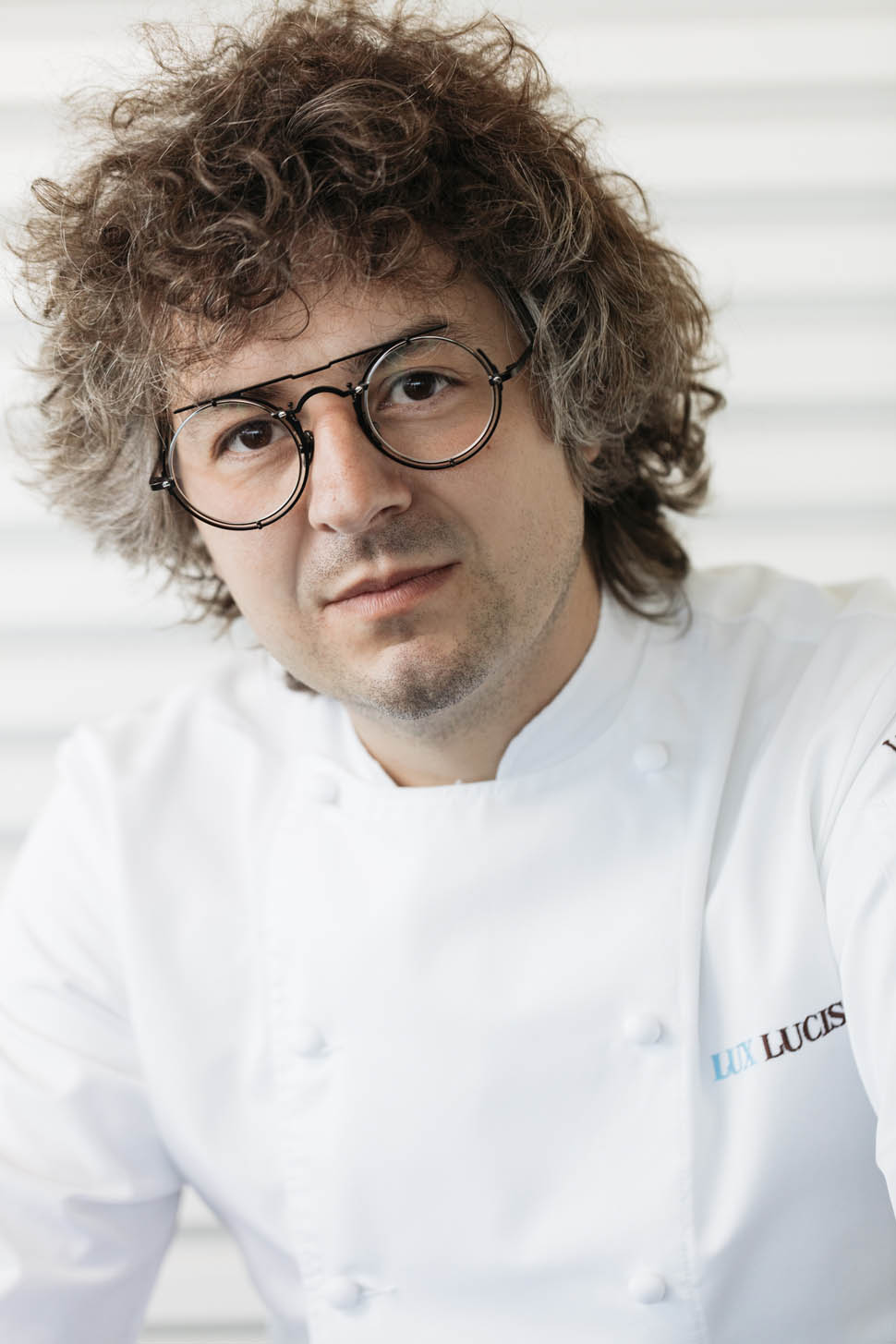
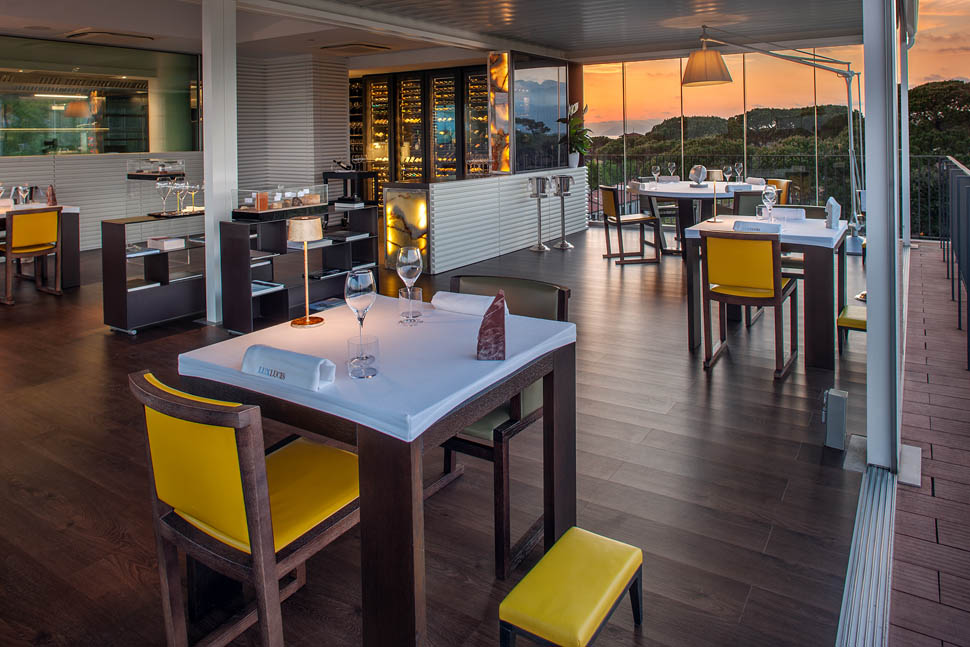
If vagueness is poetic, however, exactitude is relentless. Above all, the dining service and kitchen fit together to the millimeter, as rarely happens in Italy, so much so that it would be almost impossible to imagine Cassanelli's dishes without the glass chosen for the purpose by Sokol Ndreko. The professional symbiosis between the two, who practically opened the restaurant, is becoming increasingly accomplished and is now expanding to include new figures, such as sommelier Piero Ghiri, who formerly worked for the legendary Merlo di Camaiore.
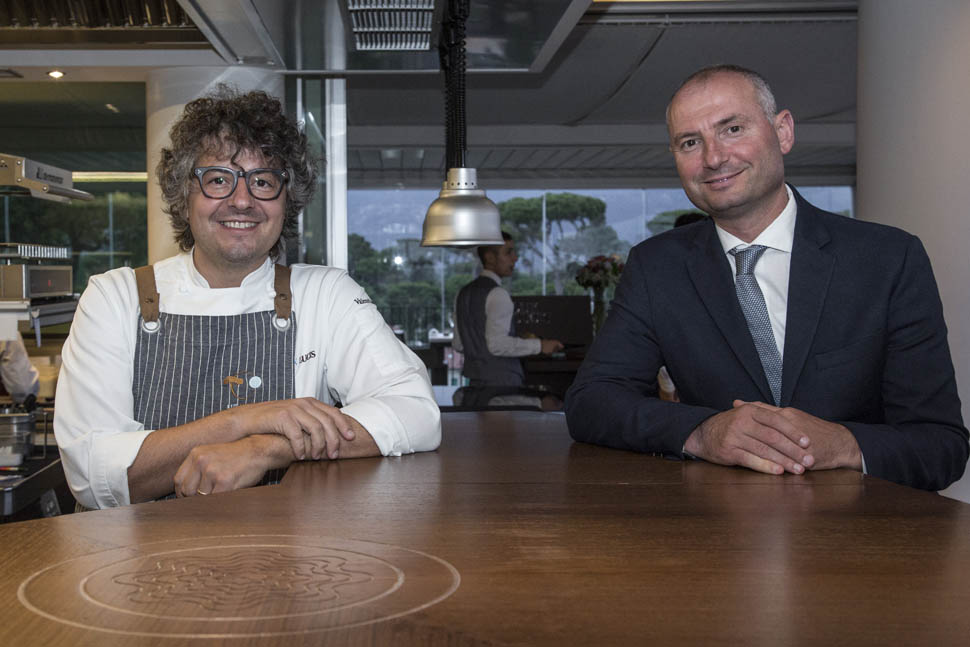
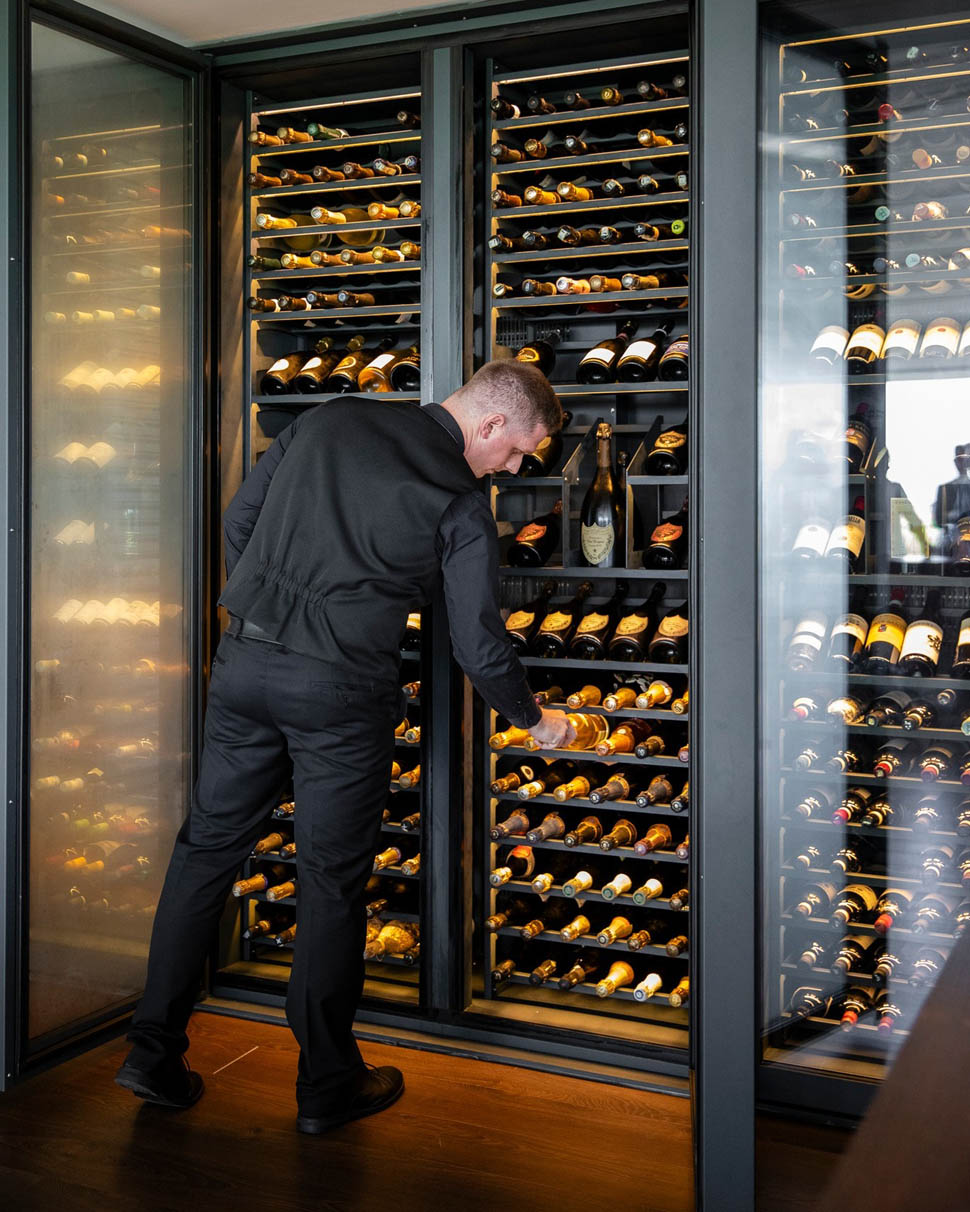
The cuisine and menus
The menu is called “Versilia in Movimento,” because, Cassanelli explains, the local ingredients are contaminated there with spices, gastronomic cultures, and exotic cooking. Then there are several routes: Vegetalmente, where vegetables are interpreted in a brackish key, to convey the gustatory stamp of the house; Litorale, with seafood dishes; and Orizzonti on the road, in fact, which conveys the idea of a slow journey, where otherness is not consumed by getting on and off a plane, but approached patiently as the matter slowly moves. They cost 130, 150 and 190 euros, respectively, but the advice is not to miss pairing at 75, 95 and 110.
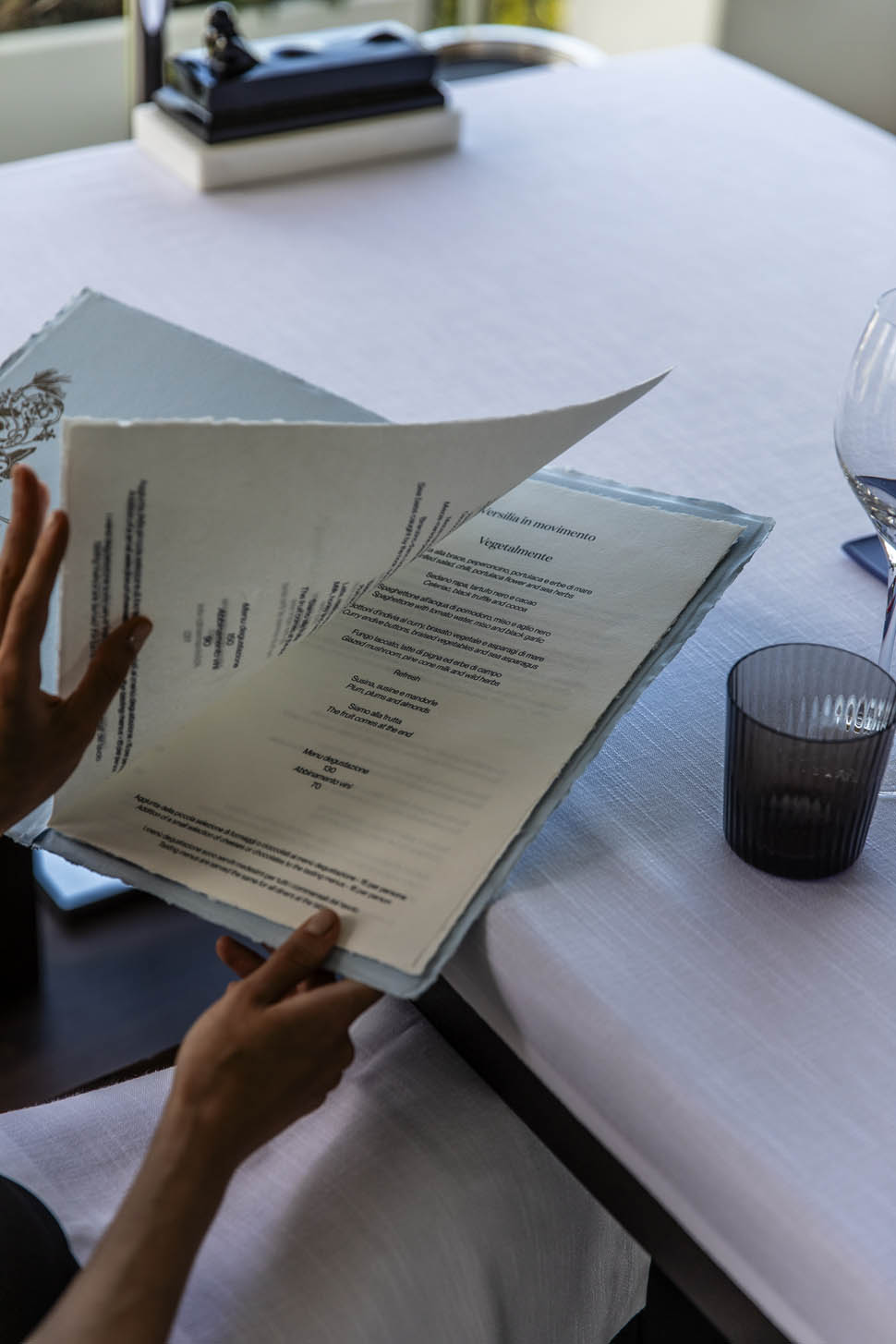
Orizzonti is structured in a sequence of moments, from dawn to night: culinary haikus that, as in previous seasons, follow a theme, linking the courses like a concept menu. And the impression is that of an increasingly confident and elegant young maturity. "Awareness of place and raw material, confidence with suppliers and the team, which is increasingly stable, have grown. It is no longer just me and Sokol, a very strong team has formed around us.
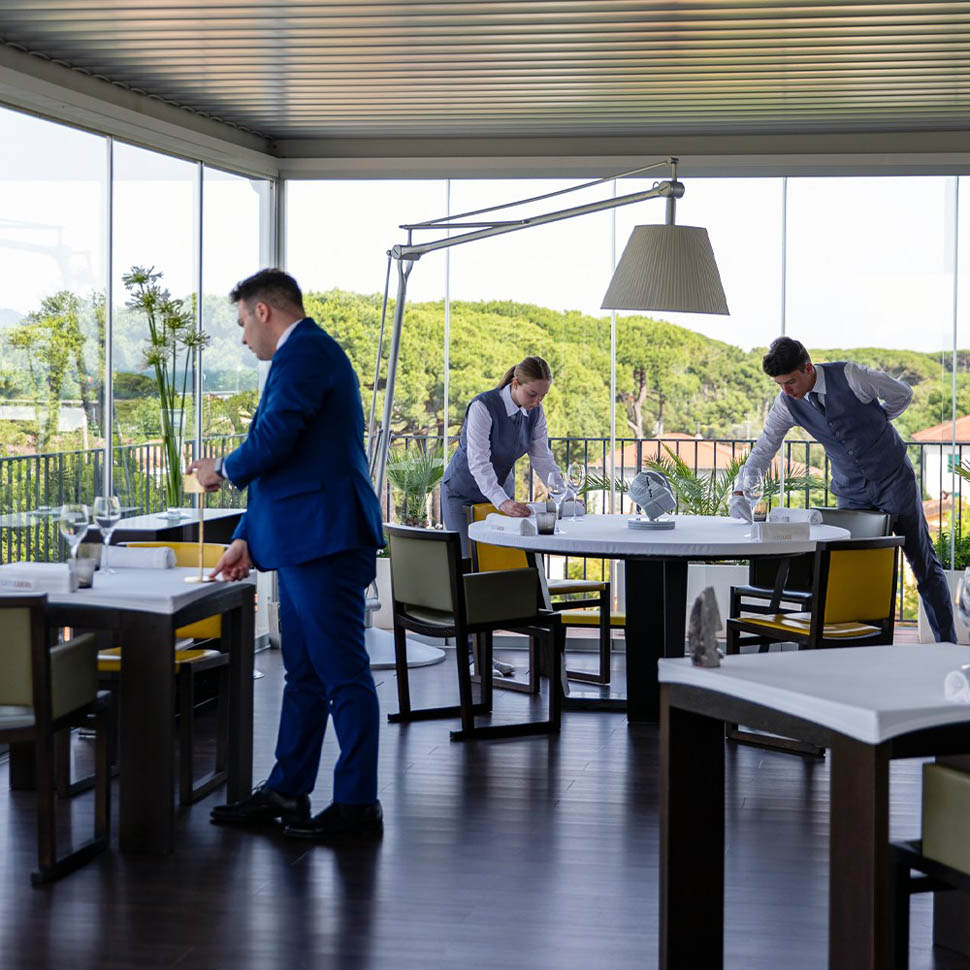
The team is increasingly grounded, with an unified vision, allowing us to work with freedom of means and thought. The guests themselves are more aware, and this helps us. We are no longer the ones who do weird things in Forte: when they want something different, they come to us, knowing that in addition to imagination, they will find the comfortable aspect and care for the area around, consistent with our vision.
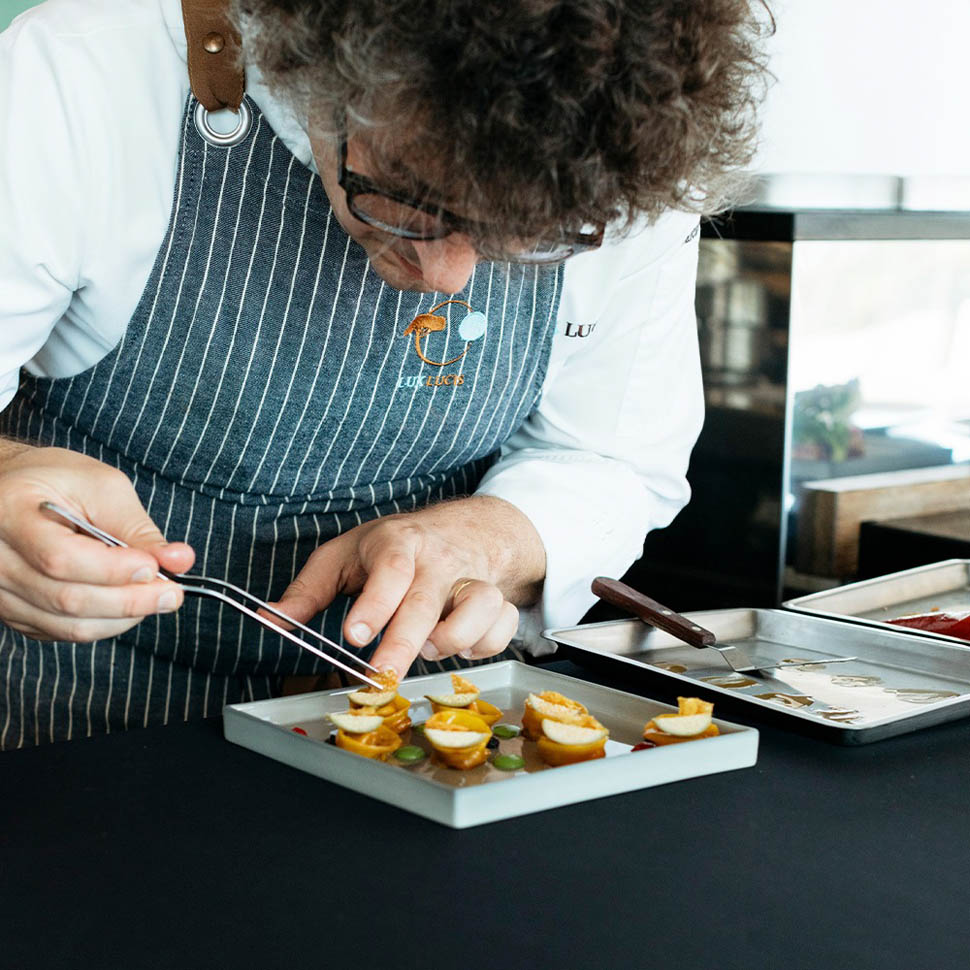
My idea has always remained the same, but in the early years, when I was younger, lack of time and staff could lead to straighter tastes, because we had to simplify, eliding elements that could grace. Today we dare a little more, mellowing and softening. But the concept still remains straight."
The dishes
Horizon is etymologically that which limits, in short, the norm of the game. And here is the oxymoron of a “Alba di Mezzogiorno,” (Midday Sunrise) that is, facing south. It consists of fig leaf oil, marinated shovel, green vegetables, a cacciucco raviolo with lots of mullet and a mullet filet in sashimi, ending with tuna roe beurre blanc. On the one hand the territory, on the other Sicily. To match, Ndreko pours a 1983 Schwaab-Adams Wehlener Sonnenuhr Auslese Mosel Riesling, which seals the spatial paradox, buffering the vegetal freshness with the softness of residual sugar.
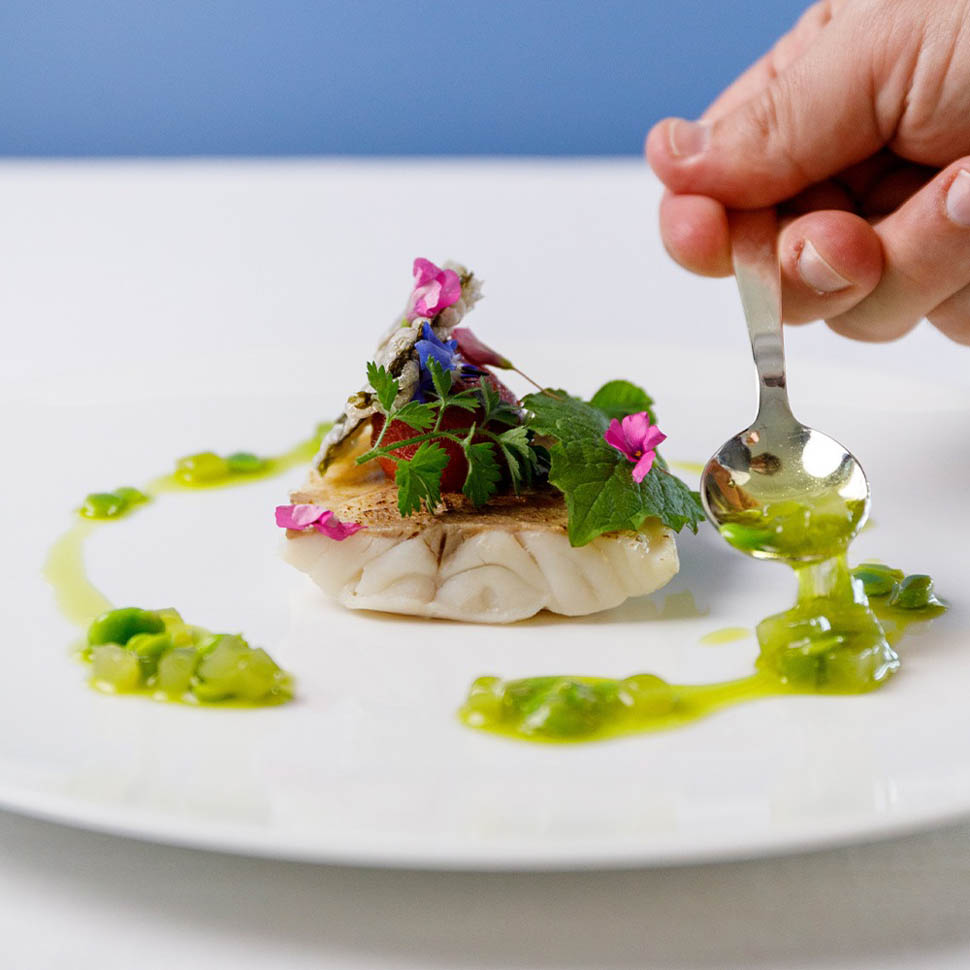
"Ricordo futuro" or “Future Remembrance” is instead a signature of the house: the coffee mackerel with snail panna cotta, fermented quince and caviar, slightly revised in the preparation of the fish, no longer passed over coffee beans, but marinated and then roasted on the skin, with the addition of a little pulp in the panna cotta to bind. The pairing is a dazzling Poiré pear cider from Bordelet, loaded with aromaticity and sweetness but only on the nose, with the bubbly finishing to mop up the fattiness of the blue fish, in liaison with the quince. Because a menu that explores horizons calls for a range of provenances and types. “Litorale” is called the cooked and raw royal langoustine, that is, unilaterally seared, served with chickpea hummus, another typical ingredient for example of "cecina", a sort of chickpea flatbread, cypress for the balsamic of the early hinterland, and tomato wafers for the slight acidity and heat of summer, plus a classic whipped sauce. The identity of Versilia in a most elegant bite.

“Scoglio di levante” or "East cliff", then marks the transition to the first courses. These are tamarind mezze maniche with typical murici alla marinara, typical sea snails of the area, usually seasoned with tomatoes. "For years we have been trying to contrast the sweetness of the starches with the acidity of the cooking liquid, in this case a tamarind broth, with a PH similar to tomato, which makes the pasta itself taste twofold. The garnish is murici alla marinara with garlic sauce and an emulsion of livers and scraps in tamarind broth." The black fish, or moron, is a house fetish. In “Profondo,”, "Deep", the pelagic fish is prepared “Mediterranean style,” that is, marinated in miso with the addition of elderberries, pollen and burnt herbs to balance, then finished grilled and barbecued. The side dishes are seasonal vegetables in their simplicity: marinated cucumber, purslane or wild herbs, tomato.
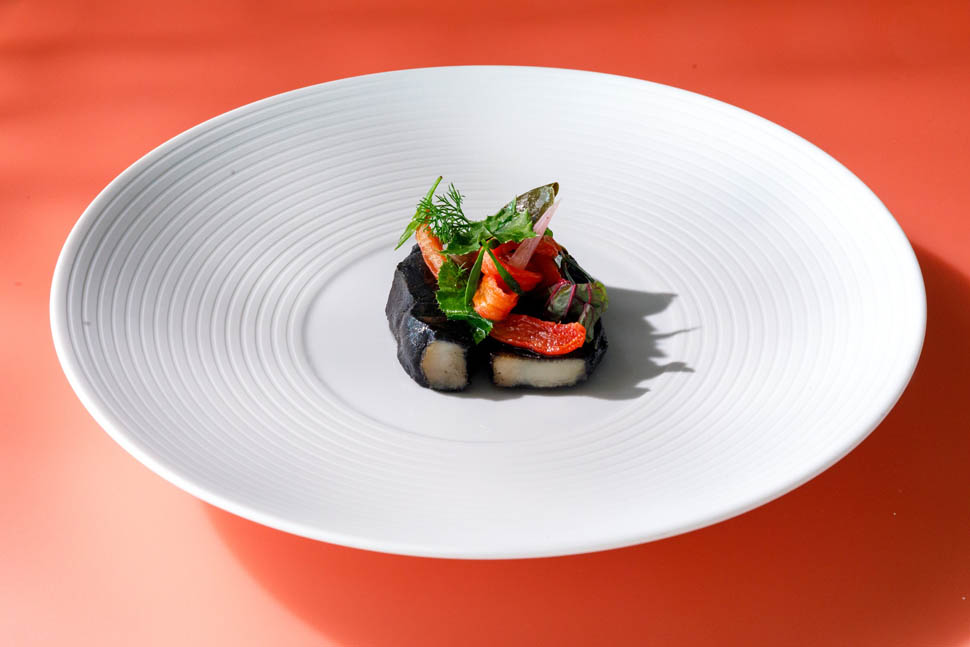
This is followed by “Rurale,” Cinta Senese piglet with mango agresto and wild boar peposo. "It tells the story of the roughness of the Tuscan hinterland, in the product and in the mention of peposo, an ancient recipe varied with a part wild boar base. It becomes ours through agresto, made from the vine row of Bagni Dalmazia, whose unripe grapes are marinated, macerated and extracted, then stored and emulsified with ripe mango pulp."
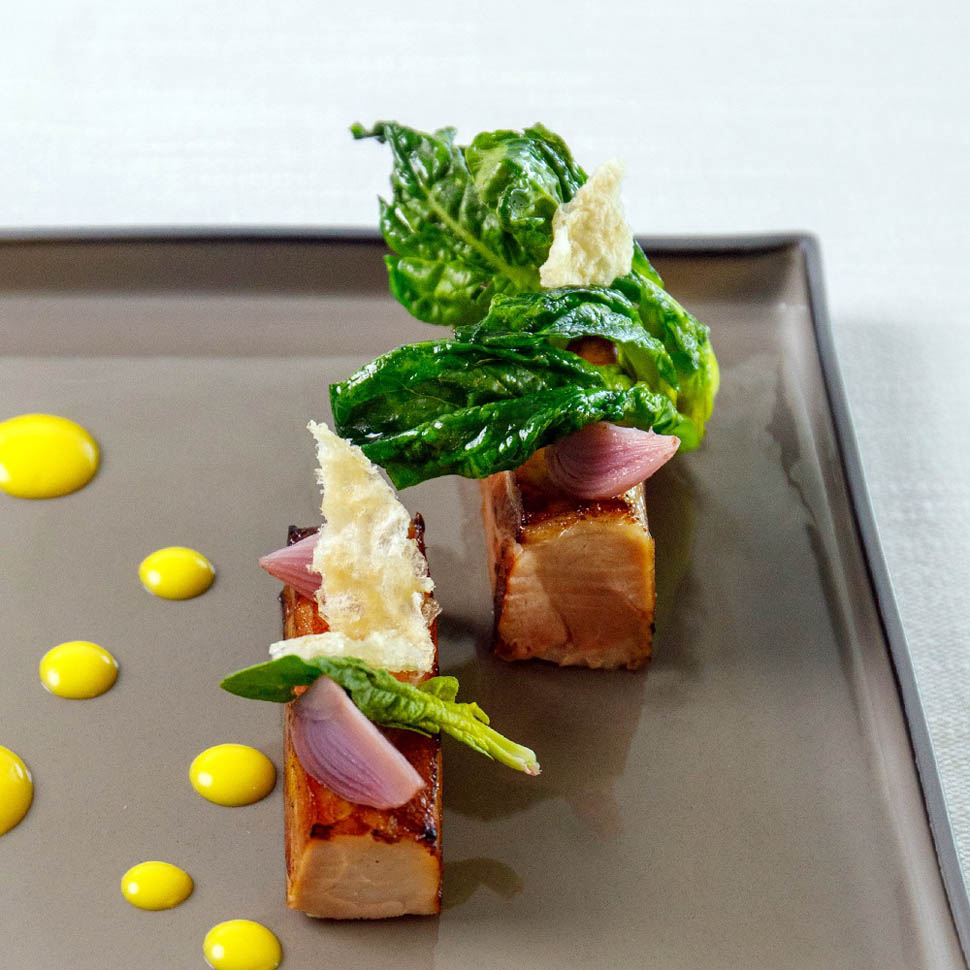
“Salmastro” is a dish composed of Garfagnana spelt cooked in reduced beef broth and miso, whipped with Parmigiano and topped in contrast with a raw mantis shrimp seasoned with lemon oil and Sansho pepper, plus beef diaphragm roe and burnt lemon. “Texture and freshness, saltiness of land and sea: the stamp of my cooking.” And here it's the turn of Testa di Luppolo beer, a local IPA, also to keep the alcohol content down. The sweetness of the spelt, countered by the savoriness of the cicadas, is echoed by cereal notes, while the citrusy bounce of lemon and creaminess works.
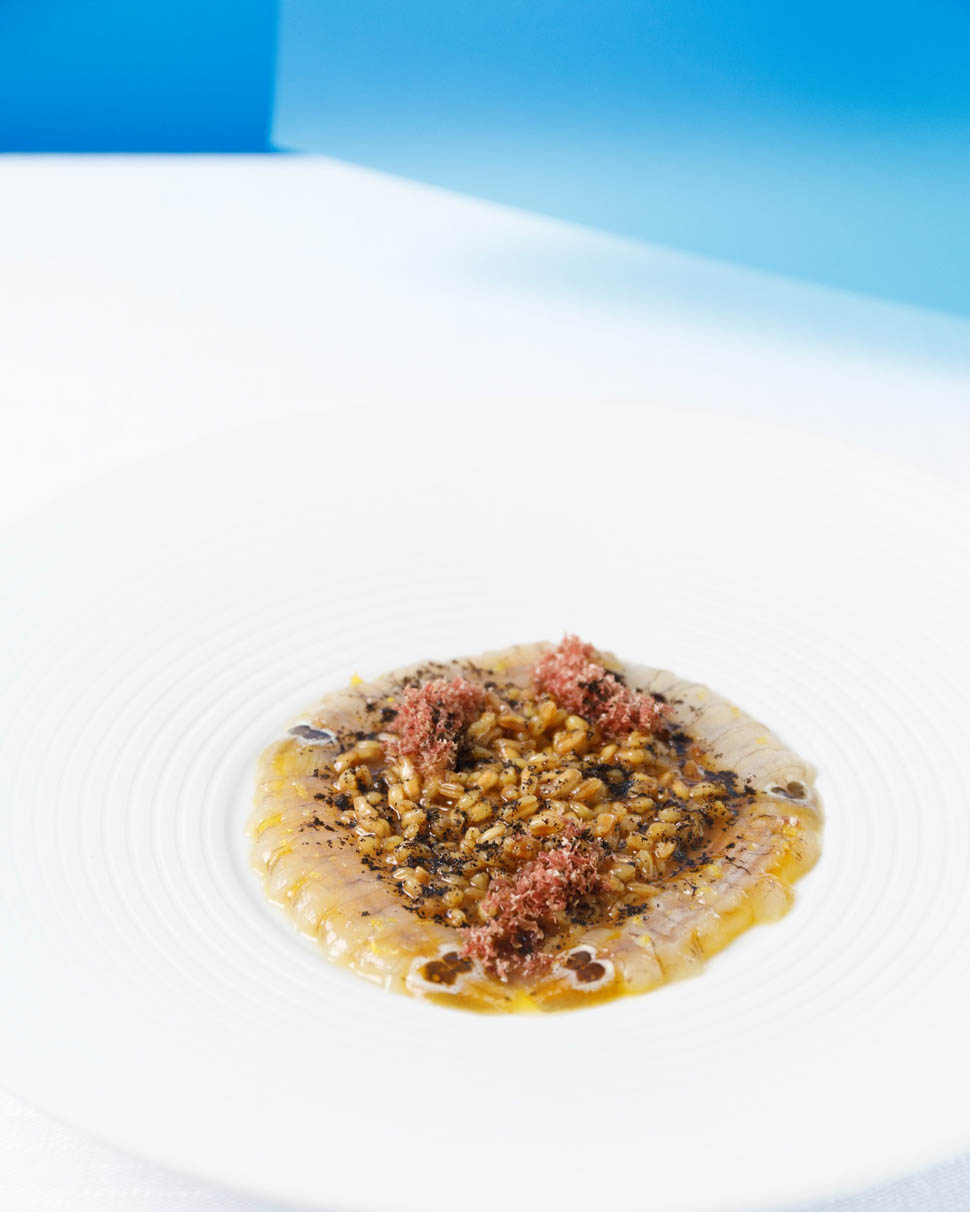
Closes the savory “A Far Journey,”, "Un viaggio lontano", pigeon cooked in carcasses, then finished on Mediterranean herbs, whose sweetness is contrasted by a roasted sea anemone onion “Genoese” sauce, plus Mediterranean herb green sauce and 'nduja oil for spiciness and animal fat. The pre-dessert “Brezza”, "Breeze", served on a spoon made from local marble, verticalizes mascarpone parfait base, lemon sea water air and sea herbs and caviar, for a catwalk between salty and sweet.

Before "Notte marina", Angiolini's faux chocolate rocks with Volterra salt, San Rossore pine nuts, samphire, burnt lemon, and basil for a post-summer grilling beach sensation. The pairing is a drink inspired by the classic chocolate-rhum combination. Ndreko couldn't find the right wine, but he recalled a Jamaican rum that was distinctly reminiscent of banana leaf. "The alcohol content, however, is now in the public eye, so I thought of adding a liquid that would make the distillate more versatile and fluid in drinking, specifically a green tea from Via del Tè, with which the collaboration is broken in, so as not to add tannins to the chocolate. The sweet extraction takes place at controlled temperatures, developing notes of cooked chestnut and conceptually of marron glacé. Sweetness, but also structure of the distillate to cleanse."
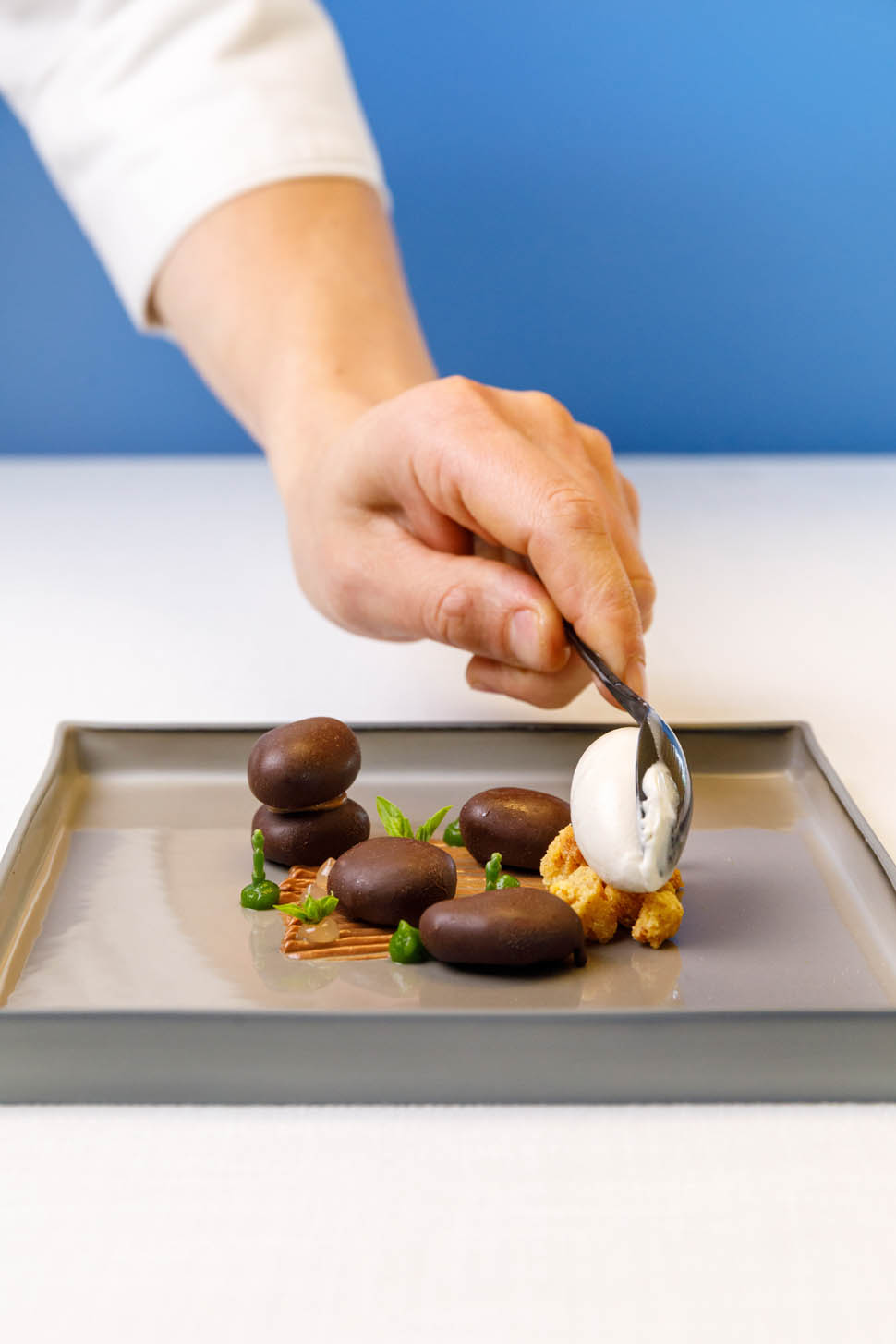
Closes the small of “Siamo alla frutta,” (litteraly "we are at the fruit" meaning at the end of the meal or game) a fruit salad of anti-waste processing including quinoa and pineapple chips, pomegranate and rose bonbon, banana truffle, pine nut and raspberry cremino.
Contacts
Ristorante Lux Lucis | Principe Forte dei Marmi
Viale Ammiraglio Morin, 67 – 55042 Forte dei Marmi (LU)
Phone. +39 0584 783636
Website: principefortedeimarmi.com
